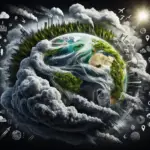
Teacherless Classroom using Artificial Intelligence: A usecase for Indian rural schools
One of the most transformative changes in modern education is the integration of Artificial Intelligence (AI) into the teaching and learning process. This development holds even more promise for rural areas in developing countries like India, where access to quality education is often hampered by a shortage of qualified teachers. Imagine a classroom where AI takes on the role of the teacher, delivering personalized education to every student. In this blog post, we’ll explore the possibilities and benefits of a teacherless classroom powered by AI, tailored specifically to the needs of Indian rural schools.
The Current State of Rural Education in India
Despite significant efforts, the educational infrastructure in rural India remains a work in progress. Some of the key challenges include:
- Shortage of Qualified Teachers: Many rural schools lack adequately trained teaching staff, resulting in subpar educational experiences for students.
- Limited Access to Learning Materials: Textbooks and other essential learning materials are often scarce.
- Poor Infrastructure: Many schools lack basic amenities such as electricity, internet, and suitable classroom environments.
- High Dropout Rates: Economic pressures and lack of motivation contribute to students dropping out prematurely.
While these challenges are substantial, AI presents an opportunity to bridge these educational gaps and bring quality learning to rural students.
How AI Can Transform Rural Classrooms
Artificial Intelligence, when implemented thoughtfully, can dramatically alter the educational landscape. Here’s how:
Personalized Learning Environment
AI systems can adapt to the unique learning speeds and styles of individual students. By collecting data on student performance, AI algorithms can:
- Identify Strengths and Weaknesses: Tailor content to focus more on areas where students need improvement.
- Provide Instant Feedback: Immediate responses help students understand mistakes and correct them in real-time.
- Custom Learning Paths: Adapt curriculum and resources based on a student’s learning pace and comprehension.
24/7 Accessibility
Unlike human teachers, AI systems can be available round-the-clock, providing students with the opportunity to learn at their own convenience.
- Self-paced Learning: Students can revisit complex topics as many times as needed, without any time constraints.
- Supplementary Learning: Extra resources, quizzes, and interactive modules can be accessed anytime.
Efficient Resource Management
AI can automate many administrative tasks, freeing up teachers and administrators to focus more on teaching and curriculum development.
Practical Implementation in Rural India
The implementation of an AI-driven classroom in rural India comes with its own set of challenges and solutions:
Low-Cost Technological Solutions
To make AI accessible in rural areas, low-cost technological solutions—such as affordable tablets and smartphones—can be employed. Cloud-based AI platforms can run on minimal hardware requirements, making them suitable for areas with limited resources.
Localized Content
AI algorithms need to be tailored to include regional languages and culturally relevant content. This can make learning more relatable and effective for students.
Government and NGO Involvement
The involvement of government and Non-Governmental Organizations (NGOs) is crucial for successful implementation. Funding, infrastructure development, and localized training programs for students and teachers can go a long way in ensuring the effectiveness of AI in education.
Case Studies: Success Stories
Several pilot projects have already shown promising results:
Project Drona in Karnataka
In Karnataka, an AI-driven education initiative named Project Drona focused on employing AI tutors to supplement traditional teaching. The program saw significant improvement in student engagement and academic performance.
The Genie AI in Kerala
In Kerala, the Genie AI platform was introduced in select rural classrooms to assist in teaching mathematics and science. Reports indicated an increased interest in these subjects and better exam scores among participating students.
Challenges and Considerations
While the potential benefits are numerous, several challenges need to be addressed:
- Data Privacy: Handling sensitive student data requires stringent security measures.
- Resistance to Change: Both parents and educators may be skeptical about transitioning to a teacherless classroom.
- Infrastructure: Reliable internet access and electricity are prerequisites for implementing AI in education.
Addressing these challenges through collaborative efforts between government, private sectors, and international organizations can create a sustainable and effective model for AI-driven education in rural India.
Conclusion
Artificial Intelligence holds immense potential to revolutionize education in rural India. By providing personalized, accessible, and efficient learning environments, AI-powered teacherless classrooms can bridge the gap in educational inequality. While there are challenges to overcome, the long-term benefits make this a promising avenue for future educational endeavors. With the right investments and policies, AI can be a game-changer for rural education in India.









